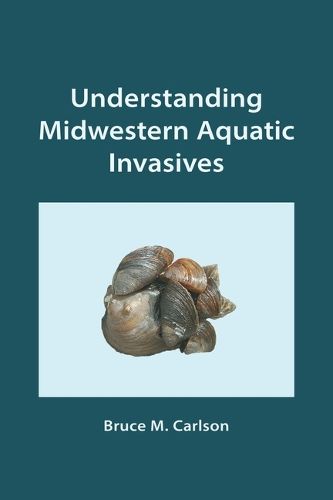Readings Newsletter
Become a Readings Member to make your shopping experience even easier.
Sign in or sign up for free!
You’re not far away from qualifying for FREE standard shipping within Australia
You’ve qualified for FREE standard shipping within Australia
The cart is loading…






Aquatic invasive species are present in or threaten many lakes and rivers in the Midwest. To effectively deal with them or to prevent their introduction into your favorite body of water, it is important to understand them. In highly readable language and with numerous color figures, the author covers the most important invasive plants and animals from a variety of perspectives.
How they got here How they spread How they function How they affect the local ecology How to control them
For each invasive species, a box shows a high quality photograph, an up-to-date distribution map, criteria for identification and how to distinguish them from look-alikes. As background for understanding invasive species, an introductory chapter describes in layperson's language how a lake is put together, how it functions and how the members of an ecological community interact. A final chapter brings things together with a general treatment of the effects of invasive species on a body of water.
In separate chapters, the book covers invasive mussels, tiny invertebrates, snails, Great Lakes fish, Asian carp, snakeheads, crayfish and invasive plants and algae.
$9.00 standard shipping within Australia
FREE standard shipping within Australia for orders over $100.00
Express & International shipping calculated at checkout
Aquatic invasive species are present in or threaten many lakes and rivers in the Midwest. To effectively deal with them or to prevent their introduction into your favorite body of water, it is important to understand them. In highly readable language and with numerous color figures, the author covers the most important invasive plants and animals from a variety of perspectives.
How they got here How they spread How they function How they affect the local ecology How to control them
For each invasive species, a box shows a high quality photograph, an up-to-date distribution map, criteria for identification and how to distinguish them from look-alikes. As background for understanding invasive species, an introductory chapter describes in layperson's language how a lake is put together, how it functions and how the members of an ecological community interact. A final chapter brings things together with a general treatment of the effects of invasive species on a body of water.
In separate chapters, the book covers invasive mussels, tiny invertebrates, snails, Great Lakes fish, Asian carp, snakeheads, crayfish and invasive plants and algae.